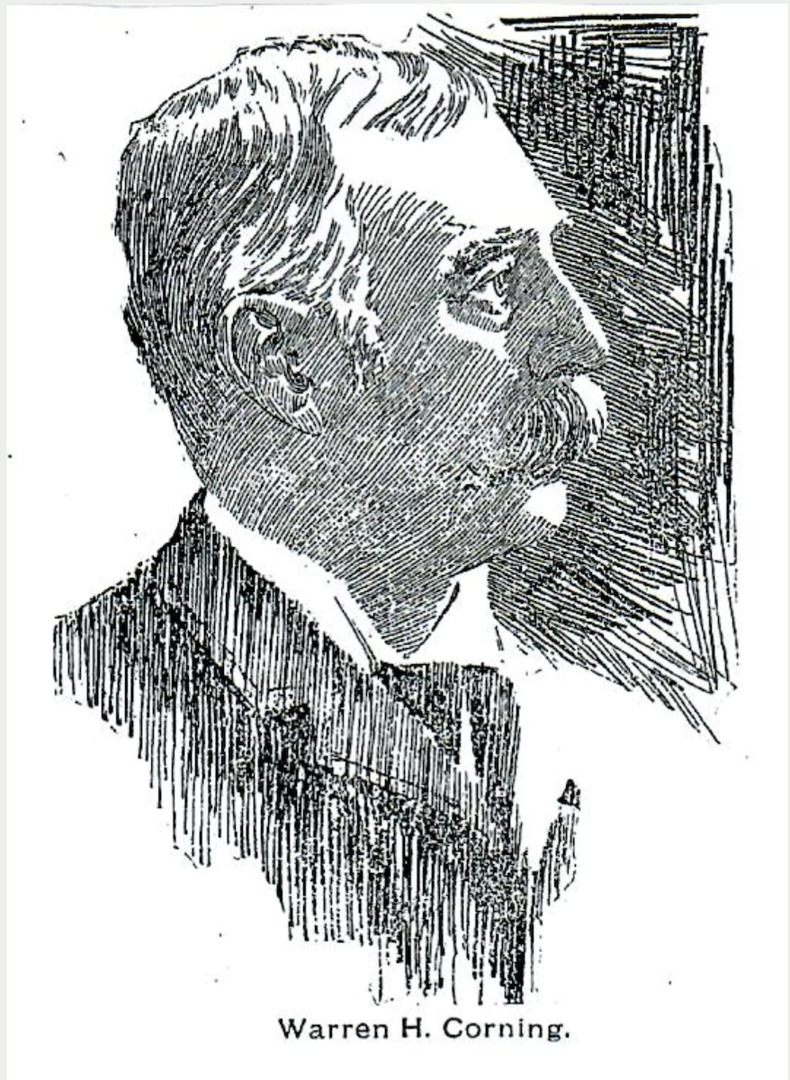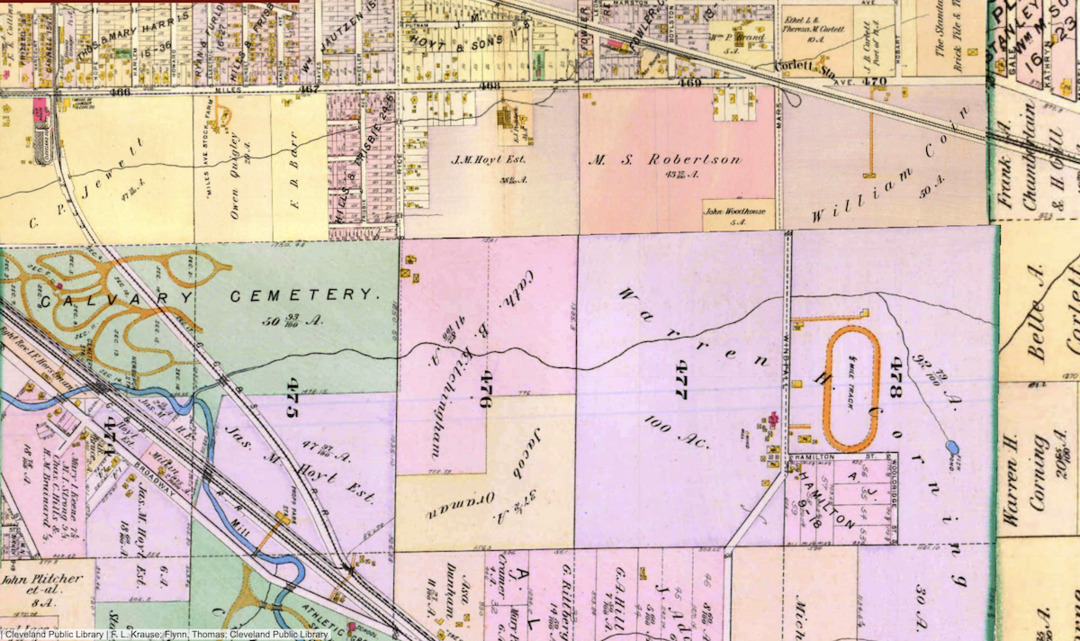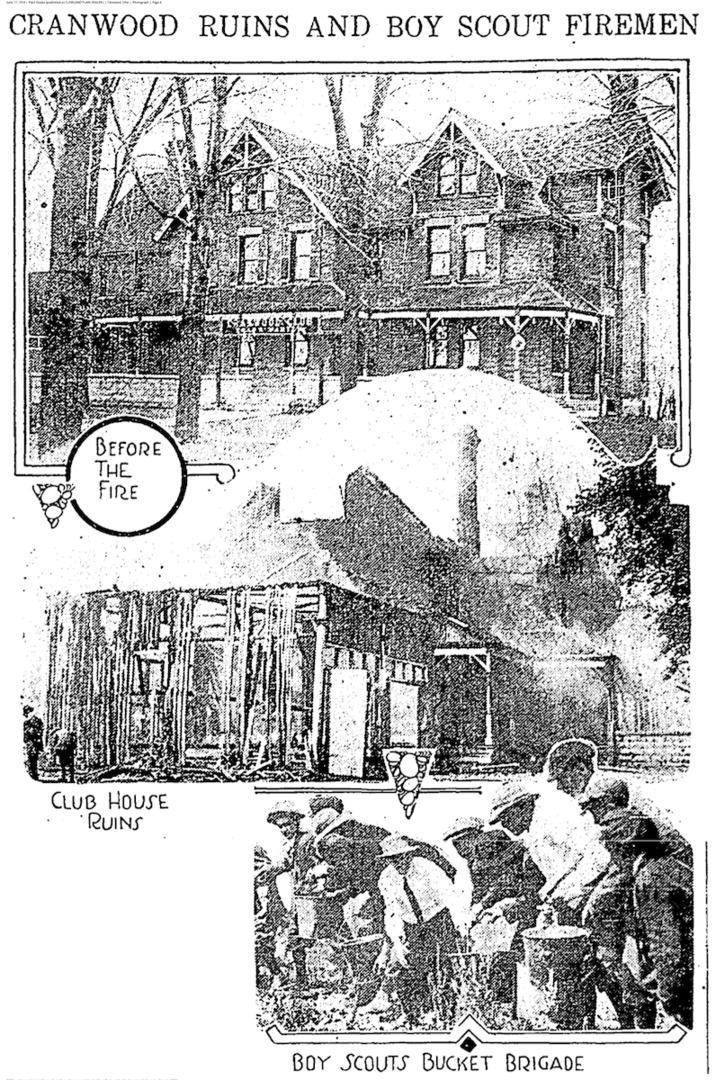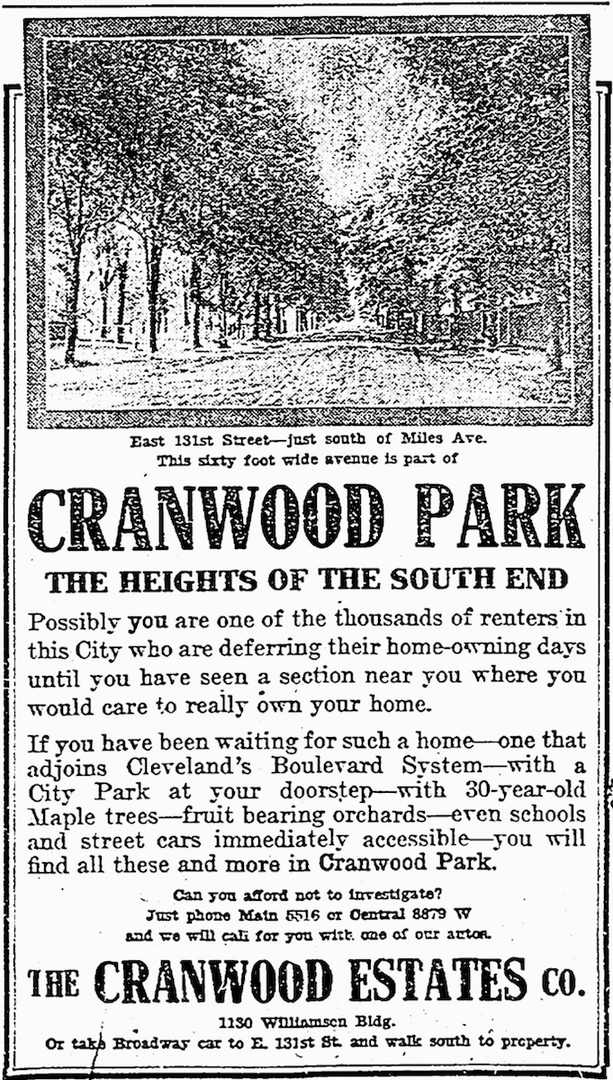
Warren Corning worked in the distillery business for 30 years, building a very successful company with offices and other facilities in both Cleveland and Peoria, Illinois. In the early 1880s, perhaps in anticipation of selling and retiring from that business, he purchased more than 200 acres of land in rural Newburgh Township (today, part of the Cleveland suburb of Garfield Heights), creating upon that land a horse and cattle farm which he called "Cranwood."
If you happen to find yourself one day driving down East 131st Street in the Garfield Heights Cranwood neighborhood, you may wish to take note of the multi-family brick dwelling on the northwest corner of East 131st and Christine Avenue. Known in that suburb as the Corning House, it is the last remnant of both a wealthy 19th century Clevelander's cattle and horse farm and, as well, a popular early twentieth century horse race track. The story of how this farm and race track fit into the history of this Cleveland suburb begins with Warren Corning.
Warren Holmes Corning was born in Painesville, Ohio, in 1841. In 1857, his family moved to Cleveland, and, as a sixteen year old, he entered into the distillery business, successfully working his way up from the bottom to ownership of a very profitable company. In 1887, Corning sold his company and retired from that business, becoming an investor in and officer of several large Cleveland banks, including First National Bank and Guardian Trust Company. In 1893, the Corning family moved from their house on Prospect Avenue into one of Euclid Avenue's grand mansions, built in 1874 for wealthy Cleveland banker, Daniel Eells. While no longer standing, it once stood on the north side of Euclid Avenue, just east of East 30th Street, next door to the founder of the Otis Steel Company, and only three doors down from the mansion of Samuel Andrews, one of John D. Rockefeller's original partners.
In 1883, Corning began purchasing land off Windfall Road (today, East 131st Street), between Miles and Broadway Avenues, in what was then Newburgh and Warrensville Townships, eventually assembling more than 200 acres of land. (Today, that land lies in the northeast part of the Cleveland suburb of Garfield Heights.) In 1884, Corning built a large house on land that fronted on Windfall Road. The house was designed, according to local architectural historian Craig Bobby, in the Queen Anne style, but it was an "understated" version of that style, then considered more suitable for a country residence. In its original design, the two and one-half story brick house featured asymmetrical massing, gabled roofs and a covered porch which extended across the entire front of the house. The interior of the house had, and still does today, approximately 8,000 square feet of living space.
According to the Garfield Heights Historical Society, Corning named the cattle and horse farm he developed on this land "Cranwood," a word that referred to both the cranberry bushes that grew wild on the land and the woods that were also prevalent there. An article appearing in the Plain Dealer on February 18, 1911, suggested another possible explanation--that the farm was named after one of Warren Corning's prize stallions. Whatever the name's origin, Corning took the business of his "horse nursery" very seriously and he soon built a small trotting track on land just across Windfall Road from his house. That track—no longer standing—would today be located east of East 131st Street, and between Thornhurst and Rexwood Avenues. Cleveland newspapers made regular mention of Cranwood Farm in the late 1880s as one of Cuyahoga County's several popular venues for harness (trotting) races.
Unfortunately for Warren Corning, his "retirement" life of raising cattle and nursing trotting horses on Cranwood Farm did not last long. In 1894, while undergoing an operation to remove cartilage from one of his knees, he developed "blood poisoning," which resulted in the amputation of a leg and eventually his premature death in 1899 at the age of 58.
By 1904, according to newspapers, Standard Land Company, a corporation owned by his heirs, was leasing the Corning house, and planning to redevelop the rest of his farm as a residential subdivision. Just seven years later in 1911, however, much of the redevelopment plan was put on hold when Standard Land Company leased the Cranwood Farm lands, including the Corning house and the trotting track across the street, to Alvin Pennock, who had formerly worked for Warren Corning at Cranwood Farm as a horse trainer.
In 1911, Pennock opened Cranwood Race Track for harness racing, enlarging the track created during Warren Corning's ownership and converting the Corning house into a race track clubhouse which featured a large restaurant and bar with seating for 150 people. For a time, the restaurant was managed by Frank Bartek, whose parents were immigrants from Bohemia (today, part of the Czech Republic). According to local newspaper articles, the upstairs of the house was, during this period, separately leased to wealthy horse owners and their families as living quarters during the racing season.
In June 1914, a fire at Cranwood Race Track damaged the Club House, but Alvin Pennock was able to repair and reopen it in time for the Fall racing season. In that same year, Pennock added the new sport of automobile racing to the calendar of events held at the track. While Cranwood was a popular and very accessible race track, harness and auto racing did not last even a decade at the East 131st street location.
In 1922, Cranwood Race Track moved to a new and larger facility on Miles Avenue in Warrensville Heights, midway between Lee and Warrensville Center Roads. In 1959, the Miles Avenue race track closed when the land upon which it stood was targeted for industrial development. Edward J. DeBartolo purchased the Cranwood franchise, but then terminated it and transferred its racing dates to the calendar of Thistledown Race Track in North Randall.
Even before Cranwood Race Track moved to Miles Avenue, the Corning House appears to have ceased being used as a clubhouse. Alvin Pennock, who had acquired title to the house in 1915 from Standard Land Company, sold it in 1920 to the William and Louise Enslen family, who moved into it that year and, according to local directories, soon redeveloped the house into a multi-family dwelling. Changes to the exterior of the building included a major redesign of the front porch which at one time extended across the entire front facade of the house, replacing that original porch with several smaller porches located at three separate entrances to units of the multi-family dwelling. By the time the 1930 federal census was taken, there were four families residing in the house. In 1935, the former clubhouse building was again damaged in a fire, but once again it was repaired. By the time the 1940 census was taken, the number of families residing in separate units in the Corning House had increased to five. A decade later, the 1950 census listed six families living in the house.
Members of the Enslen family continued to own, live in and lease out rental units in the Corning House until 1976, when Clarence Enslen, the last of William and Louise Enslen's surviving children, sold it and moved to Parma. As of 2024, the Corning House was still being utilized as a multi-family dwelling. While Cranwood Farm and Cranwood Race Track are long gone from Garfield Heights, their names live on in the northeast section of that suburb which has been known as the Cranwood neighborhood. The neighborhood also has had an elementary school and a street titled with that locally historic name, but the only true surviving vestige of Warren Corning's farm and Alvin Pennock's race track in this suburb is the Corning House.
Images










